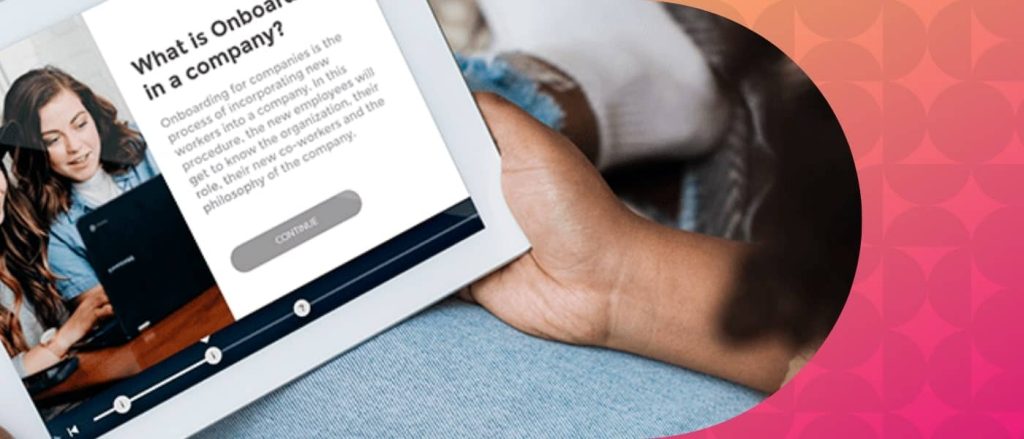How to Apply Microlearning for Effective Continuous Learning

The Rise of Microlearning in Modern Education
As traditional educational methods grapple with the challenges presented by rapid technological advancements and the saturation of information, microlearning is stepping into the spotlight as a commendable solution. This educational approach not only enhances the learning experience but also caters to the demands of an increasingly busy population, especially in countries like Nigeria, where educational needs are evolving at a much faster pace.
Key Features of Microlearning
Understanding the essence of microlearning begins with exploring its distinct characteristics, which set it apart from conventional learning strategies:
- Short Duration: Microlearning sessions are typically designed to last less than 10 minutes. This brief format allows learners to absorb information without feeling overwhelmed, promoting better retention.
- Focused Content: Each module of microlearning zeroes in on a specific objective or skill. For instance, instead of a lengthy course on digital marketing, a learner might engage in a quick lesson about social media strategies or SEO basics.
- Accessibility: One of the hallmark advantages of microlearning is its ability to be accessed anytime and anywhere. Whether it’s during a commuter’s journey on the bustling Lagos BRT or a lunch break in a crowded office, learners can engage with content that fits seamlessly into their daily routines.
In Nigeria, the rising demand for skill enhancement, particularly in sectors like technology and entrepreneurship, makes microlearning an indispensable tool. For example, a young entrepreneur might utilize microlearning modules on finance management, allowing them to comprehend essential concepts without committing an extensive amount of time during their busy day.
The Benefits of Implementing Microlearning
Adopting microlearning can significantly transform how individuals acquire and apply knowledge. Research indicates that bite-sized learning not only condenses training time but also enhances learners’ retention rates. When each instructional segment is focused and concise, it caters perfectly to the high-mobility lifestyle prevalent in urban Nigeria.
This flexibility is particularly beneficial for those juggling various responsibilities, whether they are full-time professionals, students, or entrepreneurs. The immediate accessibility of learning resources ensures that skills can be learned on-the-go, thus empowering local professionals to stay competitive in an ever-evolving job market.

This article will delve deeper into practical tips and innovative strategies for effectively implementing microlearning on your educational journey. Get ready to explore how small, intentional learning experiences can lead to substantial advancements in both personal and professional realms!
CHECK OUT: Click here to explore more
Effective Strategies for Incorporating Microlearning
As the focus on continuous learning intensifies, especially in dynamic environments such as Nigeria, adopting microlearning can be a game changer. However, understanding how to implement this approach effectively is critical to fully harness its advantages. Here are several practical strategies that individuals and organizations can employ:
1. Identify Learning Objectives
Before crafting microlearning content, it is essential to define clear and measurable learning objectives. Whether aiming to improve workplace skills or enhance personal knowledge, identify the specific outcomes you wish to achieve. For example, if a software development team is struggling with project management, tailored microlearning sessions on agile methodologies or time management can be immensely beneficial.
2. Leverage Technology for Delivery
Utilizing appropriate educational technologies is fundamental for effective microlearning. Mobile applications, online platforms, and social media are effective channels for delivering bite-sized content. For instance, educational apps like Duolingo or corporate training portals can provide instant access to tutorials, quizzes, or even short videos. These platforms enable learners to engage at their own pace, fitting seamlessly into busy lifestyles.
3. Create Engaging Content
The success of microlearning significantly hinges on the quality of content presented. Engaging visuals, relatable scenarios, and interactive elements can enhance the learning experience. Consider incorporating quizzes, infographics, or short animations that address specific concepts. For example, an infographic displaying critical aspects of financial literacy could provide young entrepreneurs with quick insights without overwhelming details.
4. Foster a Learning Community
Microlearning is not just about individual engagement; it works best within a supportive environment. Encourage collaboration among learners by creating forums or discussion groups where they can share insights and experiences. This community-driven approach enhances learning through peer interaction and collective problem-solving. For instance, Nigerian startups could benefit greatly from regular meetups where microlearning materials are discussed and applied in real-time.
5. Utilize Real-World Scenarios
When designing microlearning sessions, always tug at the relevance of real-world applications. Relatable examples can make learning more impactful. For instance, instead of merely discussing marketing strategies, provide a case study of a successful local business. Engaging with familiar contexts leads to immediate understanding and better retention of knowledge.
Incorporating these strategies into your microlearning initiatives will not only maximize its effectiveness but also facilitate a continuous learning atmosphere. Particularly in a fast-paced market like Nigeria, where staying abreast of trends and developments is crucial, these steps can provide a robust framework for achieving lasting educational success. Stay tuned as we explore more innovative methods and the transformative effects of microlearning on professional growth.
| Advantages | Details |
|---|---|
| Enhanced Retention | Microlearning promotes better information retention by breaking down complex topics into manageable, bite-sized pieces that are easier to digest. |
| Flexible Learning | Allows learners to engage with materials at their own pace, accommodating busy schedules and promoting a personalized learning experience. |
| Immediate Application | Learners can apply knowledge immediately after microlearning sessions, reinforcing practical skills and facilitating better overall performance. |
| Cost-Effective | Microlearning can often be delivered through existing platforms, resulting in lower training costs while still achieving impactful learning outcomes. |
Microlearning transforms the learning landscape by making education not only more effective but also more engaging. Integrating these methods into an organization’s structure creates an environment rich with opportunities for ongoing growth. With platforms supporting this format, organizations can customize and adapt content easily, ensuring that employees have access to the latest information necessary for their roles. By leveraging the inherent benefits of microlearning, such as enhanced retention and immediate application, learners are empowered to tackle challenges head-on, aligning personal development closely with organizational goals. The flexibility offered ensures that learning coincides with modern work environments, making it a valuable addition to any continuous learning strategy.
CHECK OUT: Click here to explore more
Maximizing the Impact of Microlearning
Once the foundational strategies for microlearning are established, the next step is to maximize its impact and ensure its integration into everyday practices. This can be achieved through various methods that encourage sustained engagement and continuous improvement in learning outcomes.
6. Incorporate Gamification Elements
Gamification is an effective technique that can significantly enhance the microlearning experience. By incorporating game-like elements such as points, badges, and leaderboards, learners are more likely to stay motivated and engaged. For example, platforms such as Kahoot! allow Nigerian educators to create quizzes that not only test knowledge but also instill a sense of competition among participants. This method can transform ordinary lessons into exciting challenges, making the learning process enjoyable and effective.
7. Schedule Regular Learning Sessions
Consistency is key in microlearning. Organizations should schedule regular, short learning sessions that allow employees to engage with new content weekly or biweekly. For instance, a Nigerian corporation could implement a “30-Minute Learning Hour” every Friday, where employees gather to explore a new microlearning module relevant to their roles. This routine fosters a culture of continuous learning, encouraging employees to anticipate and prepare for these sessions.
8. Measure and Analyze Learning Progress
To truly gauge the effectiveness of microlearning, it is necessary to monitor and analyze learner progress. Utilizing analytics tools allows organizations to track which modules are most effective, how learners interact with content, and the overall impact on their performance. For example, companies can use platforms like Moodle that provide comprehensive reporting features, facilitating data-driven decisions on future training initiatives. This ensures that learning resources are continually refined and aligned with organizational goals.
9. Personalize Learning Paths
Personalization is at the heart of effective microlearning. Tailoring content to meet the specific needs of individual learners can drastically improve engagement and retention rates. Using assessments to identify skill gaps allows organizations to create customized learning paths. For instance, a tech firm operating in Nigeria might provide different microlearning modules for beginners and seasoned developers, catering to their varying levels of expertise. Personalization ensures that learning is relevant and impactful for everyone involved.
10. Encourage Continuous Feedback
Continuous feedback is essential for any learning strategy. Creating a process for learners to share their experiences and insights about microlearning materials allows organizations to adapt and improve content swiftly. Regular surveys or feedback sessions after microlearning modules can uncover important insights into what works well and what requires adjustment. For a Nigerian NGO offering professional development, soliciting feedback from participants can help refine their programs to better suit future cohorts.
As microlearning gains traction, implementing these advanced strategies not only enhances the learning experience but also ensures that organizations and individuals remain competitive in a fast-evolving environment. By fostering an atmosphere conducive to continuous learning and adaptability, microlearning can truly become a cornerstone of professional development in Nigeria and beyond. The journey of exploring innovative learning methods is far from over, and these strategies unlock a wealth of opportunities for growth and knowledge acquisition.
CHECK OUT: Click here to explore more
Conclusion: Embracing Microlearning for a Brighter Future
In a world characterized by rapid technological advancements and shifting job demands, microlearning emerges as a pivotal approach for driving effective continuous learning. By breaking down the vast landscape of knowledge into bite-sized, manageable pieces, organizations can facilitate greater engagement, retention, and mastery among learners. The strategies discussed—such as incorporating gamification elements, scheduling regular sessions, and personalizing learning paths—are instrumental in creating a dynamic learning environment.
Moreover, integrating tools for measuring learner progress and encouraging continuous feedback ensures that learning experiences are both impactful and relevant. As seen in various Nigerian sectors, adopting these practices can tailor educational approaches that resonate with specific audiences, enhancing overall learning outcomes. Organizations ready to embrace microlearning do not just position themselves as leaders in innovation but also contribute to the broader goal of fostering a culture of lifelong learning.
Ultimately, the potential of microlearning extends beyond mere workforce training; it paves the way for a more knowledgeable society equipped to face the challenges of tomorrow. As we continue to explore the realms of learning and innovation, the tools and techniques we implement today will undoubtedly shape the learners of tomorrow. To stay ahead, now is the time to dive deeper into microlearning and uncover the immense benefits it offers for your organization and community.


